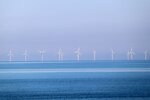07/06/2009
UK - Wind study on high wind locations
The Energy Saving Trust (EST) said some households could generate in excess of £2,800 worth of electricity a year. However, it also concluded that other locations would actually lose money if a small-scale turbine was installed. The EST is advising homeowners to visit its website, which will show whether a turbine will help them cut their bills. The performance of domestic turbines have come under the spotlight in recent years, with critics saying the devices failed to generate the amount of electricity outlined by manufacturers.
"Because the turbines are seen as a new, emerging technology, there has been very little proper monitoring and performance assessment," explained author Simon Green, the EST's head of business development. "Our study was not tested in the lab, or based on computer modelling, but on real homes in order to independently assess their performance."
'Location, location, location':
The two-year study involved 57 locations, ranging from south-west England to the Orkney Islands, and tested a range of turbines that fell within two categories: building-mounted and free standing pole-mounted.
"Building-mounted turbines were generally smaller ones with a 50cm diameter, which were fitted to roofs on a bracket similar to TV aerials," Mr Green said. "The others - pole-mounted turbines - were generally larger, with bigger power outputs, and were remotely mounted in a field or at the end of a garden."
At the sites, the researchers recorded wind speed and measured the net generation of electricity every five minutes. The team could then work out, over the course of a whole year, exactly how much electricity was produced and the overall performance of the wind turbine. Mr Green said the study's findings revealed that there were a complex range of factors that influenced the effectiveness of a wind turbine's performance.
"The fundamental conclusion is location, location, location," he said. "It is critically important that wind turbines are located in an area with sufficient wind resources. "We believe that a minimum average wind speed needs to be at least five metres per second (18km/h; 11mph)."
Highs and lows:
In the 57-site field study, the remote island of North Ronaldsay in the Orkneys generated the most electricity over the course of a year. The site's 6kW pole-mounted turbine generated almost 22,000 kilowatt hours (kWh), which equated to a £2,860 saving if electricity cost £0.13/kWh.
The report noted: "This location is in essence an offshore wind turbine mounted on land and represents an almost perfect site. "There are no obstructions around the turbine, and it is mounted in very clean air."
Data showed that the island's average wind speed was 5.75m/s. However, not all sites delivered such favourable results, Mr Green explained. "The study's findings show that a lot of the turbines had been installed in areas that did not achieve the minimum average wind speed," he observed.
The worst performing site, a 1kW turbine attached to a house in Dagenham, Essex, actually consumed more energy than it generated. "The recorded wind speed was 2.37m/s," the report noted. "This site represents an example of an installation in an urban area with a poor wind resource, as well as a poorly-installed turbine."
Based on the findings, the report estimated there was potential for more than 450,000 micro-turbines to be installed on properties across the UK. These devices, the trust calculated, would generate almost 3,500 gigawatt hours of electricity each year, enough to power about 870,000 homes. Homeowners who are interested in finding out whether their home is located in a suitable area are being advised to visit the trust's website.
"Customers can type in their postcode, and the website will give a much more accurate estimate of the average wind speed in their area," Mr Green explained. "But we should also stress that any customer who is thinking of installing this kit should use a Microgeneration Certification Scheme (MCS) approved equipment and installer."
The EST plans to follow up this study with similar assessments of other renewable energy technologies, including photovoltaic panels, micro-CHP and heat pumps.
For more information please contact Trevor Sievert at ts@windfair.net
"Because the turbines are seen as a new, emerging technology, there has been very little proper monitoring and performance assessment," explained author Simon Green, the EST's head of business development. "Our study was not tested in the lab, or based on computer modelling, but on real homes in order to independently assess their performance."
'Location, location, location':
The two-year study involved 57 locations, ranging from south-west England to the Orkney Islands, and tested a range of turbines that fell within two categories: building-mounted and free standing pole-mounted.
"Building-mounted turbines were generally smaller ones with a 50cm diameter, which were fitted to roofs on a bracket similar to TV aerials," Mr Green said. "The others - pole-mounted turbines - were generally larger, with bigger power outputs, and were remotely mounted in a field or at the end of a garden."
At the sites, the researchers recorded wind speed and measured the net generation of electricity every five minutes. The team could then work out, over the course of a whole year, exactly how much electricity was produced and the overall performance of the wind turbine. Mr Green said the study's findings revealed that there were a complex range of factors that influenced the effectiveness of a wind turbine's performance.
"The fundamental conclusion is location, location, location," he said. "It is critically important that wind turbines are located in an area with sufficient wind resources. "We believe that a minimum average wind speed needs to be at least five metres per second (18km/h; 11mph)."
Highs and lows:
In the 57-site field study, the remote island of North Ronaldsay in the Orkneys generated the most electricity over the course of a year. The site's 6kW pole-mounted turbine generated almost 22,000 kilowatt hours (kWh), which equated to a £2,860 saving if electricity cost £0.13/kWh.
The report noted: "This location is in essence an offshore wind turbine mounted on land and represents an almost perfect site. "There are no obstructions around the turbine, and it is mounted in very clean air."
Data showed that the island's average wind speed was 5.75m/s. However, not all sites delivered such favourable results, Mr Green explained. "The study's findings show that a lot of the turbines had been installed in areas that did not achieve the minimum average wind speed," he observed.
The worst performing site, a 1kW turbine attached to a house in Dagenham, Essex, actually consumed more energy than it generated. "The recorded wind speed was 2.37m/s," the report noted. "This site represents an example of an installation in an urban area with a poor wind resource, as well as a poorly-installed turbine."
Based on the findings, the report estimated there was potential for more than 450,000 micro-turbines to be installed on properties across the UK. These devices, the trust calculated, would generate almost 3,500 gigawatt hours of electricity each year, enough to power about 870,000 homes. Homeowners who are interested in finding out whether their home is located in a suitable area are being advised to visit the trust's website.
"Customers can type in their postcode, and the website will give a much more accurate estimate of the average wind speed in their area," Mr Green explained. "But we should also stress that any customer who is thinking of installing this kit should use a Microgeneration Certification Scheme (MCS) approved equipment and installer."
The EST plans to follow up this study with similar assessments of other renewable energy technologies, including photovoltaic panels, micro-CHP and heat pumps.
For more information please contact Trevor Sievert at ts@windfair.net
- Source:
- Online editorial www.windfair.net
- Author:
- Posted by: Trevor Sievert, Online Editorial Journalist
- Email:
- ts@windfair.net
- Link:
- www.windfair.net/...
- Keywords:
- wind energy, renewable energy, jobs, wind turbine, wind power, wind farm, rotorblade, onshore, offshore



























